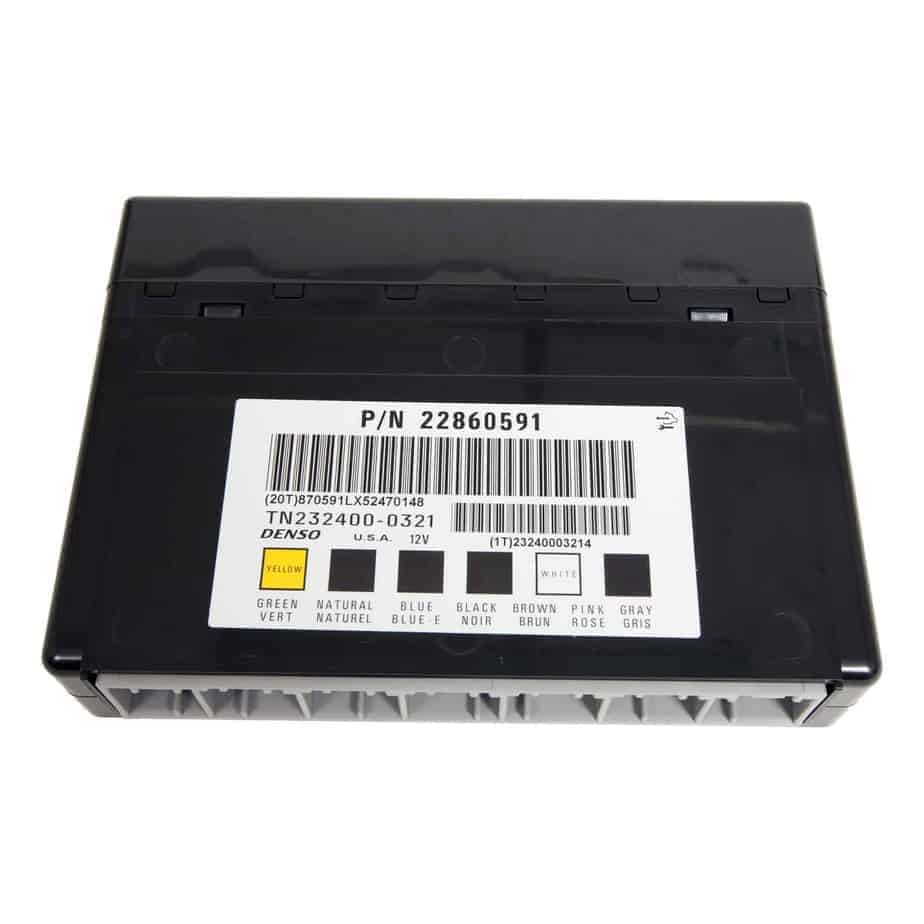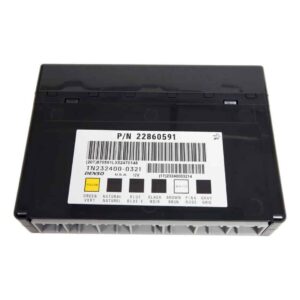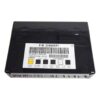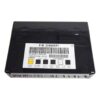Tired of Unpredictable Electrical Problems? Take Control Back.
As a technician with over two decades of experience, I’ve seen firsthand the chaos a failing Body Control Module (BCM) can cause. One minute your power windows work, the next they don’t. Your dash lights flicker like a haunted house, or worse, the security system prevents your car from starting, leaving you stranded. These aren’t just annoyances; they’re symptoms of a failing electronic nerve center. This isn’t a part you can ignore. The BCM is the brain behind your vehicle’s comfort and convenience features, managing everything from interior lighting and power locks to the instrument cluster and security system.
We offer a straightforward, reliable solution. This is a direct-replacement GM Body Control Module, meticulously programmed to your vehicle’s specific Vehicle Identification Number (VIN) before it ever leaves our facility. By flashing it with the latest GM software updates, we ensure optimal performance and compatibility right out of the box. This critical step eliminates the need for an expensive trip to the dealership for programming, saving you both time and hundreds of dollars in labor and tool fees. Get your vehicle’s electronics functioning correctly again with a part you can trust.
From the Diagnostic Bay
A customer brought in their 2009 Chevy Impala with a list of bizarre issues: the radio would turn on and off by itself, the dome light wouldn’t work, and occasionally the car just wouldn’t crank. They’d already replaced the battery, but the problems persisted. After ruling out wiring shorts, my diagnostic scanner pointed to intermittent communication loss with the BCM. Instead of a costly diagnostic and programming session at the dealer, we installed one of our pre-programmed modules. The entire job took less than an hour, and all the strange electrical gremlins were gone. The customer drove away with a reliable car and saved a significant amount of money.
Is Your Vehicle Showing These Telltale Signs?
A failing BCM can manifest in numerous ways. If you’re experiencing any of the following, it’s a strong indicator that your module needs attention:
- ✔ Power windows, locks, or mirrors operating erratically or not at all.
- ✔ Instrument panel gauges behaving strangely or going dark.
- ✔ Interior or exterior lights flickering, staying on, or not turning on.
- ✔ Security system faults or a frequent “Service Theft System” message.
- ✔ The engine cranks but refuses to start due to a security lockout.
- ✔ Unresponsive key fob or remote start functions.
- ✔ Diagnostic trouble codes (DTCs) related to communication or body electronics.
A Straightforward Guide to Your BCM Swap
For many DIY enthusiasts and professional mechanics, replacing the GM Body Control Module is a manageable job. While the exact location varies by model (check your service manual), the general process is similar. Our pre-programmed module makes it even simpler.
- Safety First: Always disconnect the negative terminal from your vehicle’s battery and wait a few minutes to ensure all systems are powered down.
- Locate the BCM: On most of these vehicles, the BCM is located under the driver’s side or center of the dashboard. It’s a plastic box with several large electrical connectors.
- Disconnect and Remove: Carefully unplug all wiring harnesses from the old module. They have locking tabs that need to be depressed. Once disconnected, unbolt or unclip the old BCM from its mounting bracket.
- Install the New Module: Mount your new, pre-programmed BCM in the same location. Securely plug in all the wiring harnesses, ensuring each one clicks firmly into place.
- Reconnect and Test: Reconnect the negative battery terminal. Turn the key to the ‘On’ position (without starting the engine) and test your electronics: windows, locks, lights, and radio.
- Final Procedures: As noted in our technical information, you may need a capable scan tool for post-installation steps like the ‘Setup SDM Primary Key’ to clear an airbag light or a ‘Brake Pedal Position Sensor Calibration’. This is essential for full system integration and safety.
Verified Vehicle Compatibility List
This module is a direct replacement for a wide range of General Motors vehicles and supersedes multiple part numbers, ensuring a perfect fit. Please match your vehicle from the list below. This unit is compatible with part numbers: 10382479, 15093910, 15276271, 15299986, 15819552, 15828601, 15837419, and many more.
- Acadia (2007-2012)
- Avalanche 1500 (2010)
- Caprice (2011-2013)
- Captiva Sport (2012)
- CTS (2008-2013)
- DTS (2006-2011)
- Enclave (2008-2012)
- Equinox (2007-2009)
- Escalade / ESV / EXT (2010)
- Express Van 1500/2500/3500 (2008-2012)
- G8 (2008-2009)
- Hummer H2 (2008-2009)
- Impala (2006-2013)
- Lucerne (2006-2011)
- Monte Carlo (2006-2007)
- Outlook (2007-2010)
- Savana Van 1500/2500/3500 (2008-2012)
- SRX (2007-2009)
- STS (2010)
- Suburban 1500 (2010)
- Tahoe (2010)
- Torrent (2007-2009)
- Traverse (2009-2012)
- Vue (2008-2010)
- Yukon / Yukon XL 1500 (2010)
Important Note: After purchase, please provide your VIN. This is absolutely necessary for us to program the GM Body Control Module correctly for your specific vehicle before shipping.
Frequently Asked Questions
What does a Body Control Module (BCM) do?
The BCM is a computer in your car that controls and monitors various electronic accessories not related to the engine, such as power windows, locks, lights, wipers, and the security system.
Is this part really plug-and-play?
Yes, because we program the module to your vehicle’s VIN before we ship it. This handles the most difficult part of the installation, but some vehicles may require a simple relearn or calibration procedure for certain systems (like airbag or brake sensors) with a proper scan tool.
How do I give you my VIN?
After you complete your purchase, you will receive instructions on how to send us your 17-digit Vehicle Identification Number (VIN). We cannot ship your order until we receive it.
Will this fix my car’s no-start problem?
If your no-start issue is caused by the anti-theft system being triggered by a faulty BCM, then yes, replacing it should resolve the problem. However, many other issues can cause a no-start condition, so proper diagnosis is key.
What tools are needed for the post-installation procedures?
Procedures like ‘Setup SDM Primary Key in BCM’ or ‘Brake Pedal Position Sensor Calibration’ require a bi-directional professional scan tool. Many independent repair shops have this equipment if you are not equipped for it.
Where is the BCM located on my vehicle?
The location varies. Common spots include under the driver’s side of the dashboard, behind the glove box, or in the center console area. The fitment list above provides general locations for many models.



